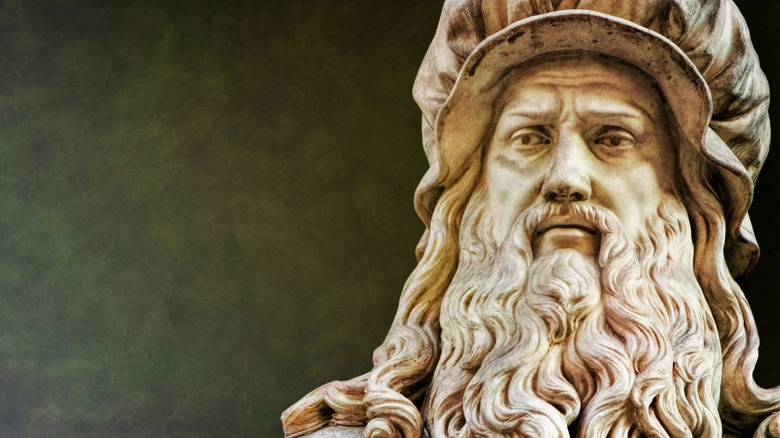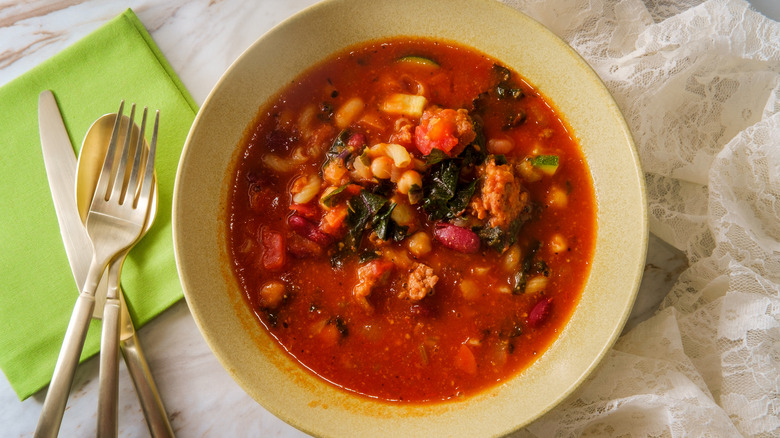The Italian Soup That Was A Favorite Of Leonardo Da Vinci
Leonardo Da Vinci, the Renaissance man himself, is most known for his famous Mona Lisa, whose smile continues to haunt and confuse those who encounter it. However, Da Vinci's other highly-regarded painting, The Last Supper, hints at his lesser-known topic of interest: Food. Painting the scene of Jesus' last meal before his crucifixion, Da Vinci made additions of his own, of food that he enjoyed or found fitting for the allegory of spreading the Gospel. In the painting's sprawling table spread, you'll find eels, leavened loaves of bread, and wine. But this isn't the only record of Da Vinci's apparent love for food.
PBS found among the artist's notes lists of foods he saw at the market, along with their prices and detailed instructions on how one ought to eat their food. As a naturally curious and creative individual, Da Vinci saw art in the act of dining, cooking, and even organizing a kitchen. When discussing the nature of Da Vinci's relationship to food, you'll come across the theory that he practiced vegetarianism. A few references in the letters of an explorer will hint at Da Vinci's love for animals, but it isn't completely confirmed. Either way, one of the artist's favorite dishes did attest to his love for simple vegetarian comfort.
Minestrone soup
Apparently, Leonardo Da Vinci's favorite dish was the Italian classic minestrone soup, per East Bay Times. However, what we know about the main ingredients of a present-day version of minestrone (tomatoes and durum wheat) is that they're imports brought in from the New World and Arab lands, per East Bay Times. Since much of Da Vinci's life preceded the introduction of tomatoes in Europe, what was in the minestrone that he so dearly loved? Well, you could make some approximations by looking at what was left in his home.
The only cookbook that was found in Da Vinci's library, Bartolomeo Platina's "On Right Pleasure and Good Health" (via PBS), had a recipe for chickpea soup that might've been similar to the soup that Da Vinci followed and enjoyed. Maria Liberati shares this exact recipe, which is a chickpea soup made of chickpeas, groats, salt, pepper, cinnamon, and a few herbs. Surely this chickpea soup isn't minestrone as we know it, but that's the beauty of a minestrone. It's a soup made of what you have, rather than a soup you plan your grocery list around, according to No Nightshade Kitchen's findings. Platina's cookbook was the first to be printed, and as you can tell by its title, it combined culinary extravagances with bodily health — a connection that Da Vinci was sure to be interested in.

